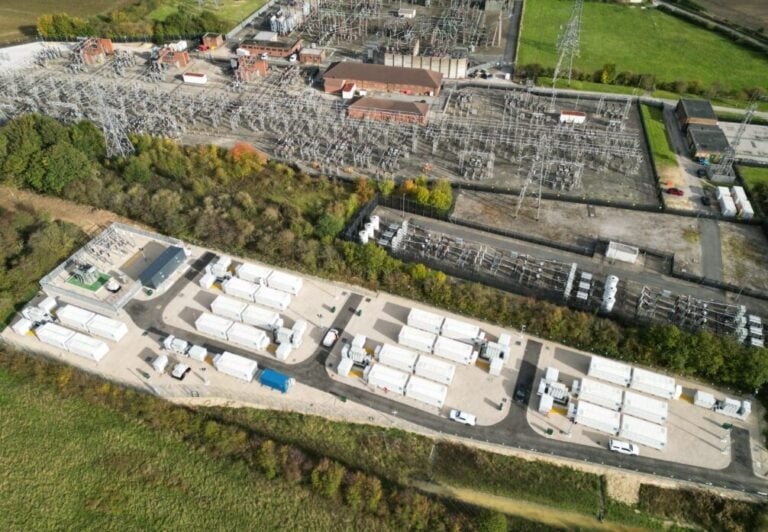UK
“We’re in around seven countries with a pretty significant pipeline in the UK – a lot of those projects have planning consent so wont be affected by the TMO-4 grid connections reform process. We’re looking to bring online over 1GW in the UK by 2030,” the firm’s head of energy storage Joshua Murphy said.
It has put the 102MWh Swangate BESS in Yorkshire, England, into operation, late last year having acquired it in 2022. Slightly unusually, the company that financed that BESS is also the one optimising it in the electricity market.
“Goldman Sachs provided the finance for Swangate but also the RTM (route-to-market) services, so our interests there are quite aligned, they are managing the asset on an entirely merchant agreement,” Murphy said.
“They are already very involved in commodity trading, they are a relatively new entrant to the BESS optimisation space but are already doing a great job.”
As with the majority of the market, Econergy’s UK projects are 2-hour systems but the firm’s have the flexibility to upsize depending on lithium prices, market and revenue structures, Murphy said, citing the bigger capacity market (CM) contracts higher duration BESS can get.
Poland
The firm’s Polish activities meanwhile include, executives claimed in September 2024, being the first to launch construction of a 50MW-scale BESS project.
Murphy: “We also have a pretty significant pipeline in Poland. We have a project there with a CM contract beginning in 2028. The pipeline there is mixed between 2-hour and 4-hour [duration projects]. Generally leaning to 4-hour [duration] because of the capacity market.“
Southern Europe
Econergy is also in Italy, Greece, Romania and Spain, mainly in PV for now. The UK and Poland BESS projects have been standalone while Murphy said that in Romania, the opportunity is primarily in co-locating with solar, for two reasons.
“In Romania, if you add a 4-hour battery to a PV development you may be eligible for an accelerated grid connection,” he said.
However, there is a trend in the electricity market in Romania and Europe more broadly making the business case around BESS and solar stronger.
“Romania has a lot of price volatility, as they’ve allowed a lot of PV on to the grid so BESS will become important to protect those projects’ returns,” he said.
“Three years ago, load shifting wasn’t necessarily required on the grid or financially beneficial for a project. But the solar duck curve is now becoming more prominent, in Romania and elsewhere in Europe.”
The ‘duck curve’ refers to the shape of power production over the day, showing the timing imbalance between the peak power demand period and peak solar generation. The term was first used in California in the early 2010s, where the integration of solar energy has led to the deployment of a staggering 11.5GW of large-scale BESS as of end-2024.
“With co-locating, you could use the BESS to offer a fixed profile for the PPA (power purchase agreement) or you could have it traded as a merchant asset—sometimes you can’t import from the grid,” Murphy adds.
In general, the firm will prefer to co-locate BESS even if standalone projects might have a better IRR (internal rate of return), Murphy said.
He is also eyeing up Greece and Spain, rich-in-solar countries which hold a lot of promise as energy storage markets but have so far got off to stuttered starts. In Greece, for example, the third large-scale auction for financial support for BESS was cancelled after confusion about the rules, while in Spain many developers and IPPs say it’s still waiting to take off.
“In Greece there is a fast-track tender which will allow 1.5GW of BESS to have accelerated grid connections, with rules on that to be announced soon – it’s quite exciting. The Greek government is generally the gatekeeper of grid connections, it’s tough to just get a grid connection like elsewhere,” Murphy said.
“In Spain, like everyone else we are just waiting for the market to open up, once it does there will be a 100mph race to secure grid connections and put down bonds.”

